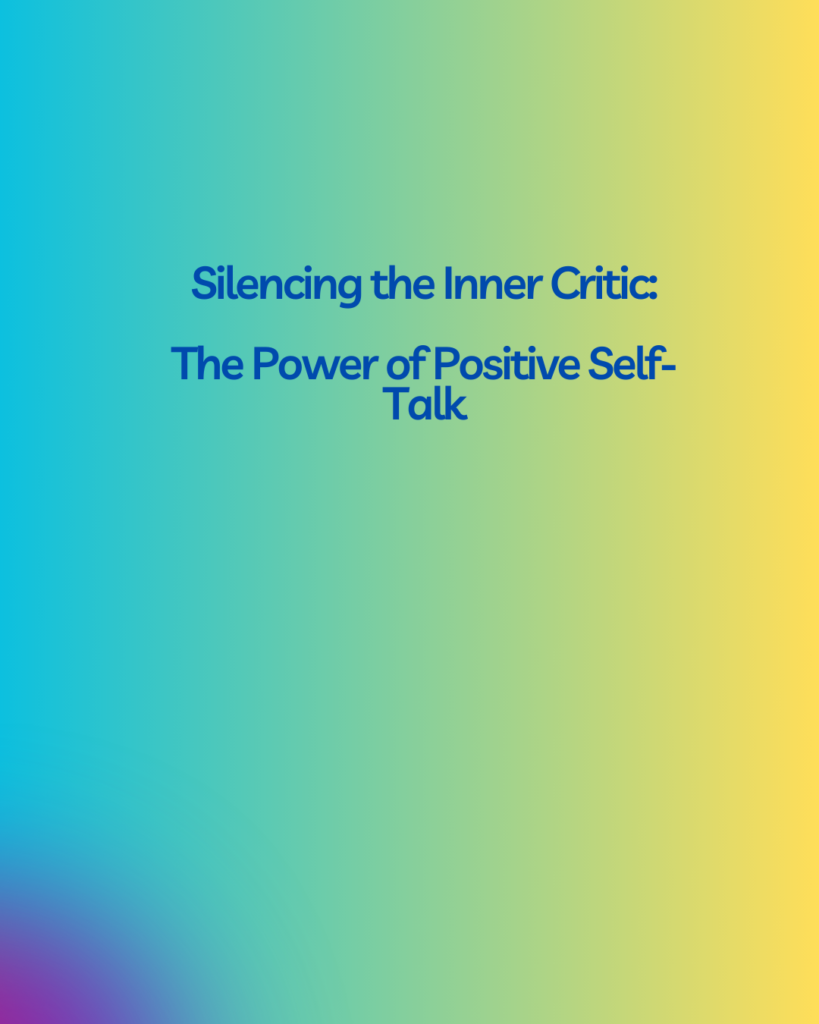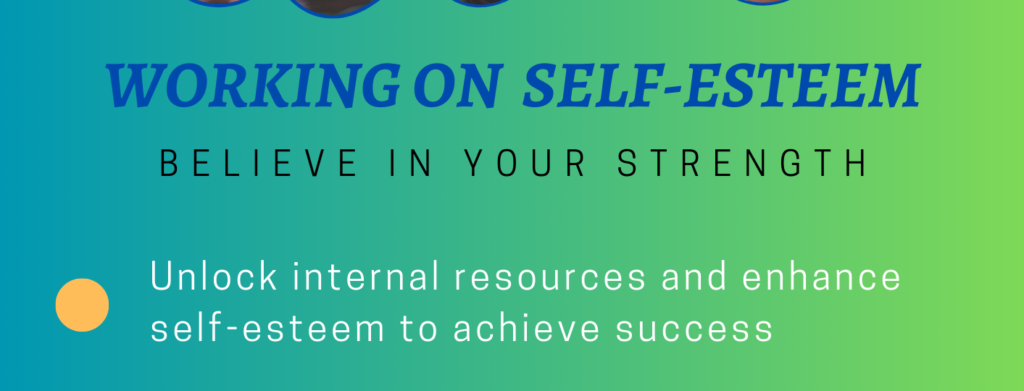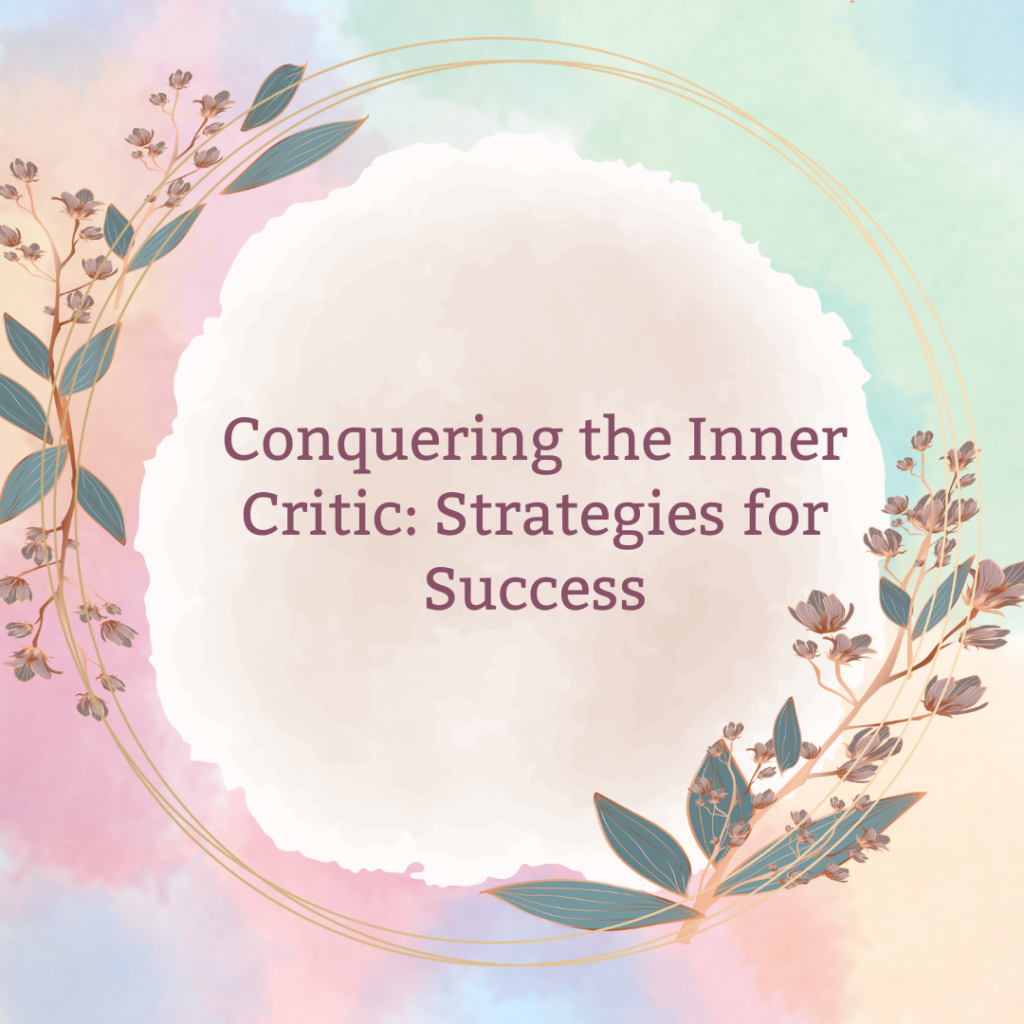
The inner critic is that nagging voice that tells you you’re not good enough, smart enough, or capable enough to achieve your goals. It feeds on self-doubt and can keep you from reaching your full potential. To achieve success, it’s essential to silence this inner critic and replace self-doubt with self-confidence.
Before we move on, Let’s start with a Lilly story.
Lilly’s Story of Inner Critic
Once upon a time, a young girl named Lily lived in a small village in the countryside. Lily was a bright and curious child who loved to explore the forests and fields around her home. She had a vivid imagination and often created elaborate stories in her mind as she played.
However, Lily’s persistent inner critic constantly told her that her stories were not good enough. “Who would want to hear your silly tales?” the critic would say. “You’re not a real writer.”
Despite this, Lily refused to give up on her passion for storytelling. While wandering through the forest one day, she stumbled upon an enchanted tree. The tree was ancient and wise, and it spoke to her in a gentle voice.

“I have watched you for many years, young one,” the tree said. “You have a gift for storytelling, but you must learn to silence your inner critic.”
Lily was amazed that the tree could speak, but she listened intently to its advice. The tree taught her how to quiet her critical thoughts and trust in her own creativity. Lily began to write stories again, and this time, they flowed from her with ease.
Lily became a renowned writer known throughout the land as she grew older for her beautiful and imaginative stories. People would come from far and wide to hear her speak, and she would always remember the wise old tree that had helped her find her voice.
And though she still heard the occasional whispers of her inner critic, Lily knew that she had the power to ignore them and create something truly magical.
What are the Learnings from Lilly Story?
The story of Lily teaches us several important lessons:
Follow your passions
Lily had a deep love for storytelling, despite the criticism she faced. She refused to let her inner critic stop her from pursuing what she loved.
Believe in yourself
Even when others doubt you or when your inner critic tries to bring you down, it’s important to have faith in yourself and your abilities.
Listen to wise advice.
When Lily encountered the enchanted tree, she listened to its guidance and learned a valuable lesson about silencing her inner critic.
Trust your own creativity.
Once Lily learned to silence her inner critic, she could tap into her creativity and produce amazing work. Trusting in your own unique abilities is key to achieving success and satisfaction in your endeavors.
Don’t give up
Despite her challenges and setbacks, Lily never gave up on her passion for storytelling. Persistence and perseverance can help us overcome obstacles and achieve our goals.
Now it’s time to move on and understand what is your inner critic.
What is Inner Critic?
An inner critic is a voice or thought pattern within oneself that frequently criticizes and judges one’s behavior, thoughts, or talents. It is a type of negative self-talk that causes self-doubt, worry, and inadequacy. Past events, cultural expectations, and personal vulnerabilities can all be triggers for the inner critic. It frequently takes the form of a persistent voice that points out flaws, mistakes, and deficiencies, resulting in a negative self-image and low self-esteem. Identifying and managing the inner critic is critical to establishing a more positive and self-affirming perspective.
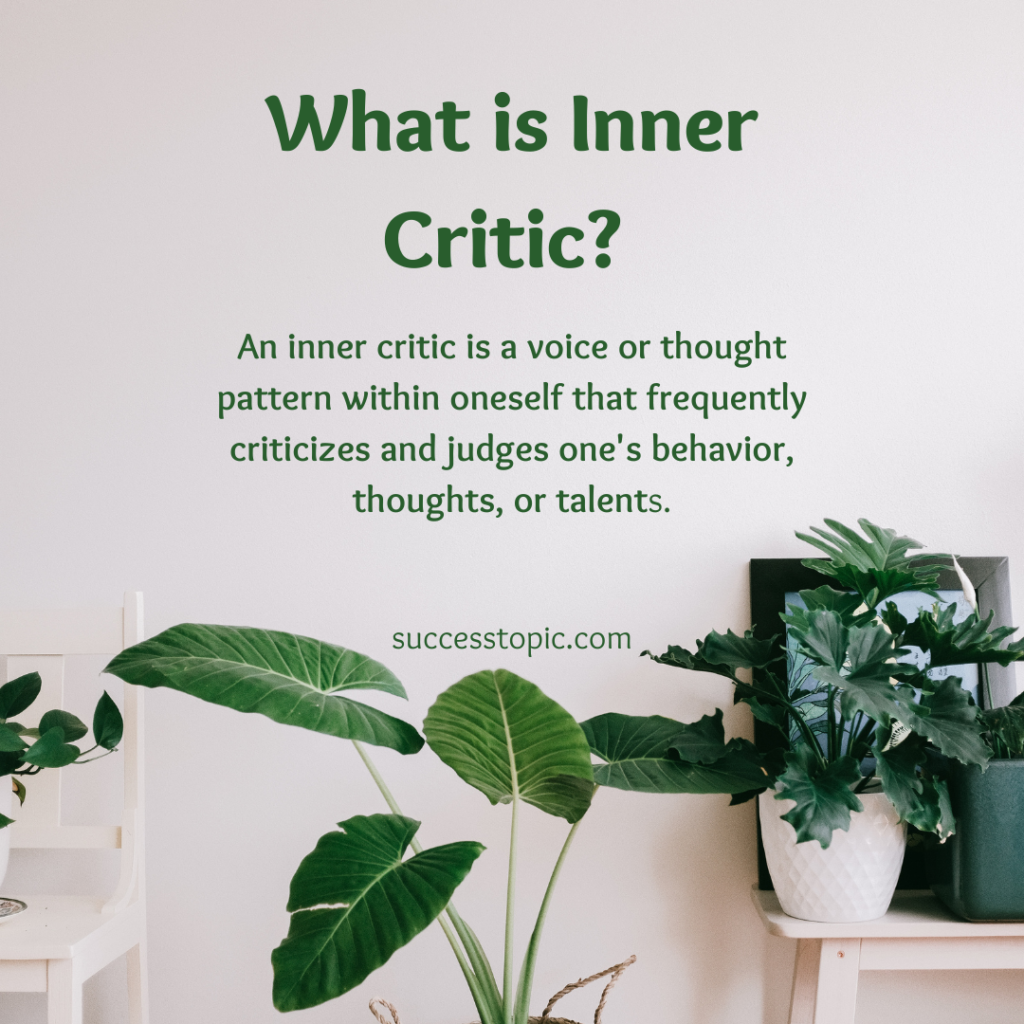
Does everyone have an inner critic?
To some extent, everyone has an inner critic. It is a natural component of the human mind and can be valuable in assisting us in evaluating and improving our actions and behaviors. For other people, though, the inner critic can become overwhelming and negative, leading to feelings of self-doubt and low self-esteem. To prevent the inner critic from negatively harming our mental health and wellness, we must learn how to recognize and handle it.
How to deal with the inner critic?
Let’s understand this with the help of Lilly Story
Step 1: Recognize and acknowledge the critic.
In the story of Lily, recognizing and acknowledging the inner critic was an important step toward overcoming its negative influence. Lily was aware of the critical voice that told her that her stories weren’t good enough, but she refused to let it stop her from pursuing her passion for storytelling. She acknowledged the presence of the inner critic, but she didn’t let it define her or her abilities.
This is an important lesson we can learn from the story of Lily. When we recognize and acknowledge the inner critic, we can manage its negative influence better. By becoming aware of its presence, we can take steps to challenge its negative self-talk, reframe mistakes as opportunities for growth, and focus on our values and goals. Ultimately, recognizing and acknowledging the inner critic can help us develop a more positive and self-affirming mindset, just like Lily did in the story.
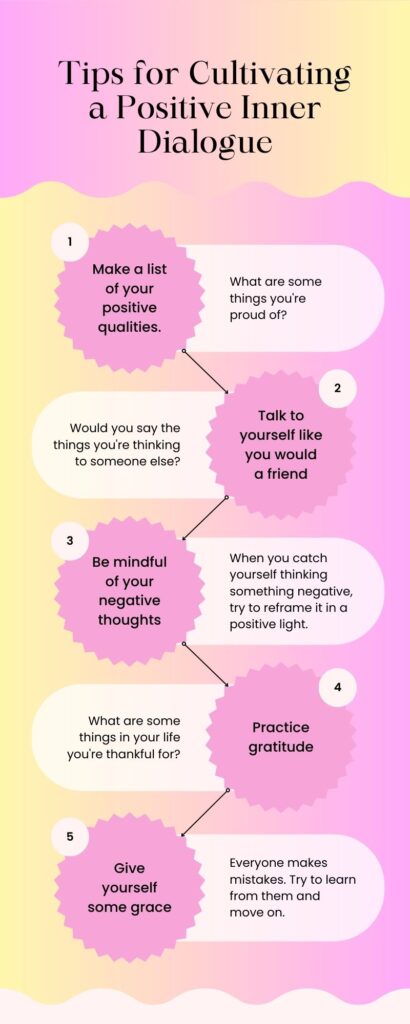
Few Tips on How You Recognize the Critic
Recognizing and acknowledging the inner critic is the first step in dealing with its negative influence on your thoughts and actions. Here are some tips on how to recognize and acknowledge your inner critic:
Pay attention to your thoughts
Start by monitoring your self-talk and noticing when negative thoughts arise. These thoughts might include self-criticism, self-doubt, or feelings of inadequacy.
Identify the critic’s voice.
The inner critic often speaks in a voice that sounds like your own or someone significant in your life, such as a parent or teacher. Notice the tone and the words used by your inner critic.
Keep a thought journal.
Write down your negative thoughts and self-criticisms as they occur. This can help you become more aware of when your inner critic is active and help you to recognize patterns.
Reflect on the origin.
Consider where the inner critic’s messages might be coming from. Are they based on past experiences, societal expectations, or the opinions of others? Understanding the origin of these thoughts can help you separate your true self from your inner critic.
Acknowledge the critic’s presence.
Instead of trying to suppress or ignore the inner critic, acknowledge its presence by saying something like, “I hear you, but I choose not to believe you.” This can help you take back control of your thoughts and emotions.
Remember that recognizing and acknowledging the inner critic is an ongoing process. With practice and persistence, you can better identify the critic’s voice and take steps to minimize its impact on your life.
Step 2: Question the critic’s validity.
In the story of Lily, questioning the validity of the inner critic was an important step toward overcoming its negative influence. When Lily encountered the enchanted tree, she listened to its guidance and learned a valuable lesson about silencing her inner critic. The tree showed Lily that the inner critic’s negative self-talk was not based on reality or facts but on fears and insecurities.
This is an important lesson we can learn from the story of Lily. When we question the validity of the inner critic, we are better equipped to challenge its negative influence. We can gain a more realistic perspective and develop a more positive and self-affirming mindset by asking ourselves if the criticisms are based on reality or just our own insecurities. Ultimately, questioning the validity of the inner critic can help us overcome self-doubt and achieve our goals, just like Lily did in the story.
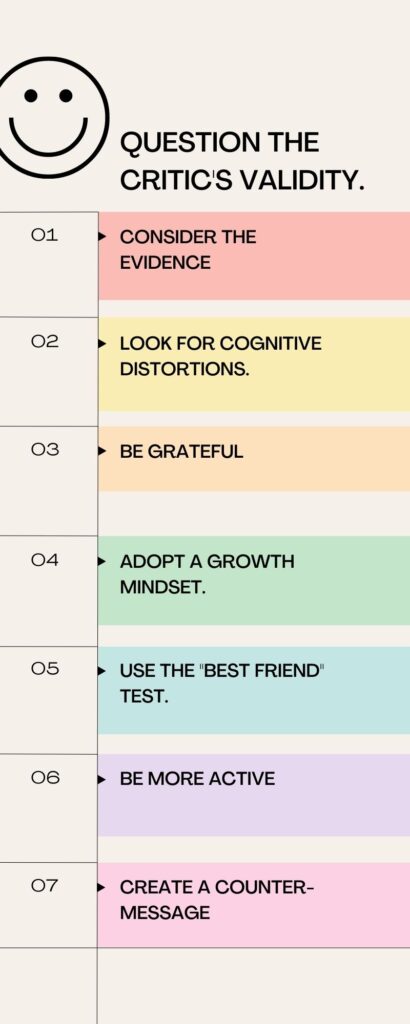
Few Tips on How You Question the critic
By challenging the inner critic’s messages, you can start to dismantle its influence on your thoughts and emotions. Here are some ways how you question the critic’s validity:
Consider the evidence
When your inner critic makes a negative statement, ask yourself if any factual evidence supports it. Are there examples from your life that disprove the claim, or is it simply an assumption based on fear or insecurity?
Look for cognitive distortions.
The inner critic often relies on cognitive distortions, such as all-or-nothing thinking, overgeneralization, or magnification. Identify and replace these distortions in your self-talk with more balanced and realistic perspectives.
Adopt a growth mindset.
Instead of viewing mistakes or challenges as evidence of your inadequacy, consider them opportunities for growth and learning. This shift in mindset can help you counteract the inner critic’s messages.
Use the “best friend” test.
Ask yourself whether you would speak to a close friend or loved one in the same way your inner critic speaks to you. If not, then why should you accept such harsh treatment from yourself?
Create a counter-message
Develop positive affirmations or mantras to counteract specific negative messages from your inner critic. For example, if the critic says, “You’re not good enough,” you might respond with, “I am continuously growing and improving.”
Step 3: Practice self-compassion
In the story of Lily, practicing self-compassion was an important step toward overcoming the negative influence of her inner critic. She acknowledged her imperfections and allowed herself to make mistakes, knowing they were growth opportunities. Throughout the story, Lily is kind and compassionate towards herself, even when her inner critic is telling her she isn’t good enough.
This is an important lesson we can learn from the story of Lily. When we practice self-compassion, we can better manage the negative influence of our inner critic. By being kind and forgiving towards ourselves, we can overcome self-doubt and develop a more positive and self-affirming mindset. We can acknowledge our imperfections and embrace our humanity rather than beat ourselves up for our mistakes. Ultimately, practicing self-compassion can help us achieve our goals and live a more fulfilling life, just like Lily did in the story.
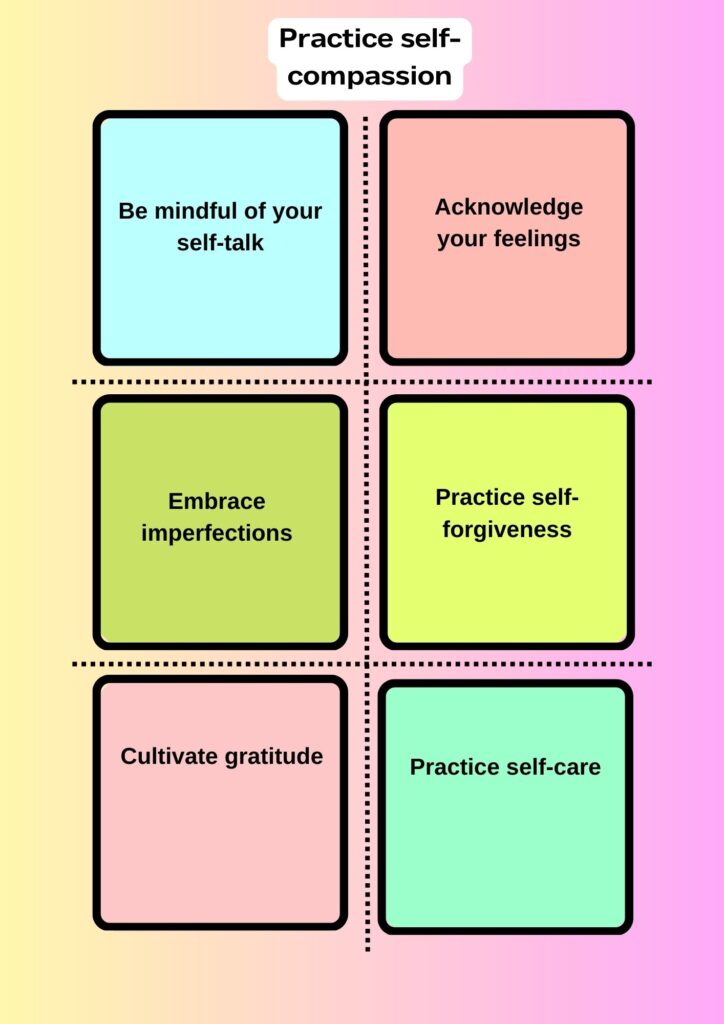
Few Tips on How to practice self-compassion
Practicing self-compassion involves treating yourself with kindness, understanding, and empathy, just as you would treat a dear friend. Here are some ways to cultivate self-compassion in your daily life:
Be mindful of your self-talk
Pay attention to how you speak to yourself, especially during challenging situations. Replace self-criticism with kind and supportive language.
Acknowledge your feelings
Validate your emotions and allow yourself to feel them without judgment. It’s important to recognize and honor your feelings, even uncomfortable ones.
Embrace imperfections
Understand that nobody is perfect, and we all make mistakes. Instead of being harsh on yourself for your flaws or errors, view them as opportunities for growth and learning.
Practice self-forgiveness
Let go of guilt and shame for past mistakes or perceived failures. Recognizing that everyone makes mistakes and forgiving yourself is essential to move forward.
Cultivate gratitude
Focus on the positive aspects of your life, and express gratitude for your achievements, strengths, and experiences. This can help shift your mindset from self-criticism to self-appreciation.
Use self-compassionate affirmations
Develop a set of positive affirmations that reinforce self-compassion, such as “I am worthy of love and kindness” or “I will treat myself with gentleness and understanding.”
Practice self-care
Prioritize your physical, emotional, and mental well-being. Engage in activities that nourish and recharge you, and make time for self-reflection and relaxation.
Seek support
Reach out to friends, family, or a mental health professional if you’re struggling to cultivate self-compassion on your own. Sometimes, talking to others can provide valuable insights and encouragement.
Step 4: Focus on strengths and achievements
In the story of Lily, focusing on her strengths and achievements was an important step toward overcoming the negative influence of her inner critic. Despite her inner critic telling her she wasn’t good enough, Lily continued to pursue her passion for storytelling and eventually found success by focusing on her strengths and what she could achieve.
This is an important lesson we can learn from the story of Lily. When we focus on our strengths and achievements, we can better manage the negative influence of our inner critic. By acknowledging our talents and accomplishments, we can develop a more positive and self-affirming mindset. We can focus on what we can achieve rather than getting caught up in the inner critic’s negativity.
Focusing on our strengths and achievements can help us build confidence and self-esteem and pursue our goals with greater enthusiasm and determination, just like Lily did in the story.
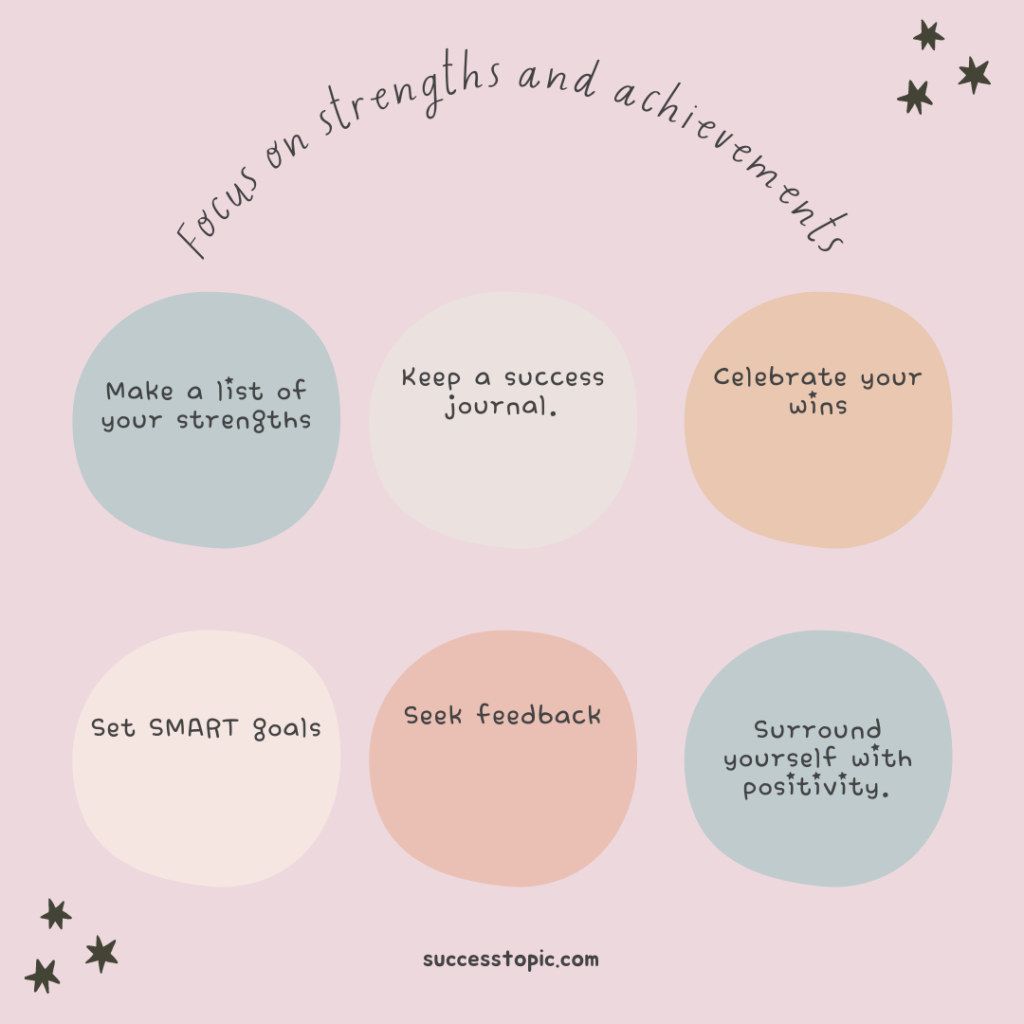
Few Tips
Focusing on your strengths and achievements can help build self-confidence, foster a positive mindset, and motivate you to continue working towards your goals. Here are some strategies to help you concentrate on your strengths and accomplishments:
Make a list of your strengths
Identify your unique skills, talents, and abilities. Reflect on how these strengths have contributed to your success and how you can utilize them further.
Keep a success journal.
Document your achievements, both big and small, in a dedicated journal or notebook. Regularly reviewing your accomplishments can help you maintain a positive outlook and remind you of your capabilities.
Celebrate your wins
Take the time to acknowledge and celebrate your achievements. This could involve sharing your success with friends and family, treating yourself to something special, or simply enjoying the feeling of accomplishment.
Set SMART goals
Create Specific, Measurable, Achievable, Relevant, and Time-bound goals that align with your strengths. This will help you leverage your abilities effectively and set yourself up for success.
Seek feedback
Ask for constructive feedback from colleagues, friends, or mentors to gain insight into your strengths and areas of improvement. This feedback can help you better understand your unique abilities and how to apply them.
Use positive affirmations
Develop affirmations highlighting your strengths and achievements, such as “I am a strong communicator” or “I have a history of overcoming challenges.” Repeat these affirmations to reinforce your self-belief.
Surround yourself with positivity.
Engage with people who uplift and support you. Positive reinforcement from your social circle can help you stay focused on your strengths and achievements.
Practice gratitude
Cultivate a mindset of gratitude by recognizing and appreciating the positive aspects of your life, including your strengths and accomplishments. This can help shift your focus away from self-criticism and negativity.
Step 5: Seek support
In the story of Lily, seeking support was an important step toward overcoming the negative influence of her inner critic. Lily found support and encouragement from the enchanted tree and the animals in the forest, which helped her to believe in herself and overcome her self-doubt.
When we seek support, we are better able to manage the negative influence of our inner critic. By reaching out to others for help and encouragement, we can gain new perspectives, develop new skills, and build a support network that can help us overcome our self-doubt. This is an important lesson we can learn from the story of Lily.

Ultimately, seeking support can help us build resilience, increase our confidence, and pursue our goals with greater determination, just like Lily did in the story.
Few Tips
Seeking support is an important aspect of maintaining your mental and emotional well-being. It is essential to recognize that it is okay to ask for help and that you do not have to face challenges alone. Here are some ways to seek support:
Talk to a trusted friend or family member
Reach out to someone you trust and feel comfortable talking to. Sometimes, simply talking through your thoughts and emotions can help alleviate stress and provide a new perspective.
Join a support group.
Consider joining a support group where you can connect with others who are going through similar experiences. This can provide a sense of community and understanding, as well as offer practical advice and coping strategies.
Seek professional help
If you are struggling with mental health issues, consider seeking professional help from a mental health professional, such as a therapist or counselor. They can provide a safe and confidential space to discuss your concerns and offer techniques to help you manage your emotions and experiences.
Utilize online resources
Many online resources are available for mental health support, including forums, chat rooms, and counseling services. These resources can provide convenient access to support and information.
Wrap up
The story of Lily teaches us important lessons about the inner critic and how we can overcome its negative influence. By recognizing and acknowledging the presence of the inner critic, questioning its validity, practicing self-compassion, focusing on our strengths and achievements, and seeking support, we can manage our self-doubt and achieve our goals.
Lily’s story shows us that our inner critic is often based on fears and insecurities rather than reality and that we can challenge its negative influence by developing a more positive and self-affirming mindset. By learning to manage our inner critic, we can build resilience, increase our confidence, and pursue our passions with greater enthusiasm and determination. Overall, the story of Lily reminds us that we can overcome self-doubt and achieve our goals as long as we learn to manage the negative influence of our inner critic and cultivate a positive and self-a


